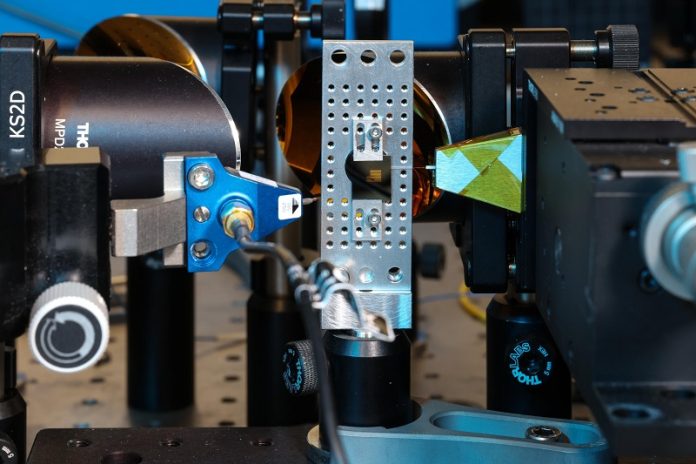
A team of researchers from EPFL in Switzerland and Harvard University has developed a powerful new chip that could revolutionize the way we transmit and receive data.
This mini device can convert signals between terahertz (THz) and optical frequencies, paving the way for lightning-fast communication systems and advanced sensing technologies.
The breakthrough was recently published in Nature Communications.
Terahertz radiation sits in a unique position on the electromagnetic spectrum.
It’s faster than microwave signals (used in Wi-Fi and mobile phones) but slower than infrared light (used in fiber optics).
Terahertz waves can carry massive amounts of information very quickly, making them ideal for future technologies like 6G networks, high-precision radar, and fast computing.
However, until now, it has been extremely difficult to link terahertz signals with existing optical or microwave systems in a practical and efficient way.
Last year, the research group created a super-thin chip using a material called lithium niobate, which could generate terahertz waves using laser light.
Now they’ve taken it a step further by designing a chip that can both produce and detect terahertz signals—meaning it works in two directions. It can turn light into terahertz waves and also turn terahertz waves back into light.
This two-way conversion is a major achievement because it allows terahertz and optical technologies to work together on the same tiny device.
The team embedded ultra-small components called transmission lines onto the chip to guide the terahertz waves, much like tiny radio cables.
Nearby, they placed structures to guide light. This setup lets the chip efficiently swap signals between the two with very little energy loss.
The chip isn’t just effective—it’s also powerful and fast. It can generate terahertz signals over 100 times stronger than previous devices, and it has a bandwidth of up to 3.5 THz, which is about five times broader than earlier models.
This opens the door to a wide range of practical uses.
One exciting possibility is terahertz radar. These ultra-short pulses could help self-driving cars detect how far away an object is with extreme precision—down to just one millimeter.
The chip’s small size and low energy use also make it ideal for building compact, high-speed communication devices that could support the future of 6G mobile networks.
Lead researcher Professor Cristina Benea-Chelmus said the team expects their design to play a key role in the future of terahertz technology.
With continued miniaturization and integration, this chip could be a major stepping stone in transforming how we connect and communicate in the years ahead.



